
英文原版进口 早期美国读本 An Early American Reader
¥ 68 九品
仅1件
作者J.A. Leo Lemay
出版社United States Information Agency
出版时间1989-01
印刷时间1989-01
开本16开
页数741页
上书时间2012-07-25
- 在售商品 暂无
- 平均发货时间 16小时
- 好评率 暂无
- 店主推荐
- 最新上架
商品详情
- 品相描述:九品
- 商品描述
- 英文原版进口 早期美国读本 An Early American Reader 1989.01版基本信息作者:J.A. Leo LemayISBN:出版社:United States Information Agency出版时间:印刷时间:开本:16开页数:741页包装:平装价格:内容介绍 This anthology of early American primary cultural and literary readings and documents is intended as a reader and reference for advanced students, teachers, and scholars. There are six chapters: The American Dream, Religious Traditions in Early America, The indian and the Frontier, Nature and the World, Slavery and the Black, and The American Revolution. Eighty-seven illustrations from the period complement the text. (Developed by Department of State Branch for the Study of the U.S.) 目录List of IllustrationsForewordPrefaceChapter One:The American DreamVersions of Success1.America as Opportunity: Captain John Smith, A Description of New England, 1616.2.America as a Model: John Winthrop, A Model of Christian Charity, 1630.3.Poverty versus Opportunity: John Hammond, Leah and Rachel, or The Two Fruitful Sisters, Virginia and Maryland, 1656.4.The Way to Wealth: Benjamin Franklin, Preface to Poor Richard\'s Almanac, 1758. The Westward Movement and the Future Glory of America1.Translation Imperil: Anonymous, The Plymouth Rock Verses, 3 September 1730.2.America in 1758: Nathaniel Ames, A Thought upon the past, present, and future State of North America, An Astronomical Diary, 1758.3.The Rising Glory of America: Philip Freneau and Hugh Henry Brackenridge, The Rising Glory of America, 1772.4.The Future of America: John Adams, Letter to Benjamin Rush, 23 May 1807.Explaining America1.The Plantation South: William Byrd of Westover, Letters to English Friends, The Correspondence of the Three William Byrds of Westover, 5 July 1726; 2 February 1726-27; and 28 July 1730.2.Urban America: Benjamin Franklin, The Autobiography of Benjamin Franklin: A Genetic Text, Parts I and 11, 1771 and 1784.3.What is an American?: St. John de Crevecoeur, What is an American?, Letters from an American Farmer, 1782.4.A Rural Boyhood: Joel Barlow, The Hasty Pudding, 1796.American Responses to Criticism1.The Criticism: Anonymous Folk Song, A West-Country Man\'s Voyage to New England, c. 1632.2.Americans as Hard-drinking Hillbillies: Anonymous, New England\'s Annoyances, 1643.3.A Satiric View of the South: Ebenezer Cook, The Sot-Weed Factor, 1708.4.New England Jokes: Anonymous, Yankee Doodle, c. 1747-70.Chapter Two:Religions Trains in Early AmericaPuritanism1.Emigration: John Cotton, God\'s Promise to His Plantations, 1630.2.Emigration and First Settlements: William Bradford, Of Plymouth Plantation, Book One, 1620-30.3.Puritan Poetry by a New England Lady: Anne Bradstreet, The Prologue, The Author to Her Book, Contemplations, The Flesh and the Spirit, Before the Birth of One of Her Children, To My Dear and Loving Husband, A Letter to her Husband Absent upon Public Employment, Another (\"Phoebus make haste\"), Another In Reference to Her Children, In Memory of My Dear Grandchild Elizabeth Bradstreet who Deceased August, 1665, Being a Year and a Half Old, On My Dear Grandchild Simon Bradstreet, who Died on 16 November, 1669, Being but a Month, and One Day Old, and To My Dear Children, ca. 1612-72.4.Puritan Poetry by a New England Minister Edward Taylor, Prologue,Part 1. Preparatory Meditations: First Series.Meditation, no. 1, The Experience, The Return, and The Reflexion, and Meditation, nos.. 6, 8, 29, 30, 32, 39, and 40; Second Series. Meditation, nos.. 1, 2, 3, 4, 7, 12, 14, 18, 26, 29, 48, and 82,Part 2. God\'s Determinations Touching his Elect.The Preface, The Soul\'s Groan to Christ for Succour, Christ\'s Reply, Some of Satan\'s Sophestry, Difficulties arising from Uncharitable Cariages of Christians, The Glory of and Grace in the Church set out, The Soul\'s Admiration Hereupon, The Joy of Church Fellowship rightly attended,Part 3. Miscellaneous Poems.Upon A Spider Catching a Fly, Upon a Wasp Child with Cold, Huswifery, Upon Wedlock, and Death of Children.5.The Greatest Puritan: Cotton Mather, The Tryal of Bridget Bishop, Wonders of the Invisible World, 1693; Nehemias Americanus, The Life of John Winthrop, Esq., Governor of the Massachusetts Colony, Magnalia Christi Americana, 1702; A Christian at His Calling: Two Brief Discourses, 1701.The Great Awakening1.The Change in Philadelphia: Benjamin Franklin, Item in the Pennsylvania Gazette, 12 June 1740.2.Awakening the Spirit: Jonathan Edwards, Sinners in the Hands of an Angry God, 1741.3.Psychological Analysis of the Movements of the Spirit: Jonathan Edwards, Personal Narrative, ca. 1740.4.One Effect of the Spirit: Benjamin Franklin, The Autobiography of Benjamin Franklin, from part three, 1788.5.Retrospect. Phillis Wheatley, On the Death of the Rev. Mr. George Whitefield, 1770.Other Religious Expressions1.Quakerism: John Woolman, Journal, 1774.2.Religion on the Frontier: Charles Woodmason, Journal, 1768, Burlesque Sermon, The Carolina Backcountry on the Eve of the Revolution, 1766-68.3.The Enlightenment: Benjamin Franklin, A Witch Trial at Mount Holly, 1730; An Apology for the Young Man in Goal, 1743; Old Mistresses Apologue, 1745; The Speech of Miss Polly Baker, 1747; A Traveller: The Grand Leap of the Whale, 1765; The Cravenstreet Gazette No. 113, 1770; The Ephemera, 1778; The Elysian Fields, 1778; Proposed New Version of the Bible, 1779; On Wine, 1780; To the Royal Academy of _________.Chapter Three:The Indian and be FrontierIndian Heroes and Cultures1.Mythic Encounters: Captain John Smith, The General History of Virginia, 1624.2.The Indian as Epic Hero: Cadwallader Colden, The History of the Five Indian Nations, 1727.3.Indian Literature and Ritual: Canassatego, Gachradodow, et al., Orators for the Six Nations, A Treaty Held at the Town of Lancaster, in Pennsylvania, 1744.4.Who is There to Mourn for Logan?: John Logan, Logan\'s Speech, 1775.Captivity Narratives1.The Classic Account: Mary Rowlandson, The Sovereignty and Goodness of God. . .being a Narrative of the Captivity and Restoration of Mrs. Mary Rowlandson. . ., 1682.2.The Worm Turns: Cotton Mather, Decennium Luctuosum, 1698.3.A Mock Captivity Narrative: Benjamin Franklin, An Account of the Captivity of William Henry in 1755. . ., 1768.Influences of the Indian and the Frontier1.On Warfare: Anonymous [Tom Law?], Lovewell\'s Fight, 1725.2.The Frontier as Lubberland: William Byrd of Westover, The History of the Dividing Line, 1729-41.3The Frontiersman as Hero: John Filson, The Adventures of Col. Daniel Boon. . ., 1784.4.An Intellectual\'s Appraisal: Benjamin Franklin, Remarks on the Politeness of the Savages of North America, 1784.The Indian and the Frontier in the Imagination1.The Noble Savage: Richard Lewis, \"Food for Criticks,\" 1730.2.Believers in Eternity: Philip Freneau, The Indian Burying Ground, 1788.3.Indian Culture Is Superior: Philip Freneau, The Indian Student, 1788.4.The Frontier as Escape: Washington Irving, Rip Van Winkle, 1819.Chapter Four:Nadine in the New WorldAmerica as Cornucopia1.The Abundance of Nature: Captain John Smith, Of such things which are naturally in Virginia, and how the[y] use them, A Map of Virginia, 1612.2.Nature as a Fruitful Mother: George Alsop, Of the situation and plenty of the Province of Mary-land, A Character of the Province of Mary-land, 1666.Nature as a Source of Value1.Civilized nature-The Garden: Robert Beverley, History and Present State of Virginia, 1705.2.A Newtonian Universe: Richard Lewis,\" A Journey from Patapsco to Annapolis, April 4, 1730.\"3.A Source for Speculation: Philip Freneau, The Wild Honey Suckle, (1786) To a Caty-Did, (1850) and On a Honey Bee (1809).4.Lessons of Morality: William Cullen Bryant, Thanatopsis, (1811); To a Waterfowl, (1815); and To the Fringed Gentian (1829).The Emotions of Nature1.The Sublime: Thomas Jefferson, Query IV: A notice of its Mountains? Query V: Its Cascades and Caverns? Notes on the State of Virginia, 1784.2.The Exotic: William Bartram, Travels of William Bartram, 1791. Chapter Five:Slavery and the BlackReports by Whites1.The Effects of Slavery: William Byrd of Westover, Letter to John Perceval, Earl of Egmont, 12 July 1736.2.An Apology and a Defense: Anonymous, Philanthropus, Letter to Mrs. Bradford, 1744.3.Trouble in the Future: Thomas Jefferson, Query XVIII: Manners, Notes on the State of Virginia, 1784.Contributions by Others1.A Neoclassic Black Poet: Phillis Wheatley, On Being Brought from Africa to America, On Imagination, To S. M., a Young African Painter, on Seeing His Works, Recollection, To the Right Honorable William, Earl of Dartmouth, His Majesty\'s Principal Secretary of State for North America, etc., On the Death of the Rev. Dr. Sewell, 1769, Goliath of Gath, Niobe in Distress for Her Children Slain by Apollo, from Ovid\'s Metamorphoses, Book VI, and from a View of the Painting of Mr. Richard Wilson.2.The Quaker Conscience: John Woolman, Some Considerations on the Keeping of Negroes, 1754. Slavery in Literature and Narrative 1.The Slave as Christ: St. John de Crevecoeur, Letter IX: Description of Charles Town, . . . Letters from an American Farmer, 1782.2.Parody of the Defenses of Slavery: Benjamin Franklin, The Speech of Sidi Mehemet Ibraham, 12 February 1790.3.The Slave Narrative: Olaudah Equiano, Chapter II, The Life of Olaudah Equiano, 1789.Chapter Sixe:The American RevolutionBelletristic Literature1.The Satirist: Benjamin Franklin, Rattlesnakes for Felons, 9 May 1751; Rules by Which a Great Empire May Be Reduced to a Small One, 14 September 1773; An Edict by the King of Prussia, 22 September 1773; A Method of Humbling Rebellious American Vassals, 21 May 1774; The Sale of the Hessians, 18 February 1777; Supplement to the Boston Independent Chronicle, 12 March 1782, 7 March 1781.2.The Poet: Philip Freneau, A Political Litany: Libera Nos. Domine, 1775; George the Third\'s Soliloquy, 1779; On the Memorable Victory, 1781; To the Memory of the Brave Americans, 1781; To an Author, 1787.Political Writings and Documents1.The Fundamental Document: Thomas Jefferson, The Declaration of Independence, 4 July 1776.2.The Propagandist: Thomas Paine, Thoughts on the Present State of American Affairs, Common Sense, part 3, 1776; The Crisis, no. 1, 1776.3.The Soldier: George Washington, To the Officers of the Army, and Farewell Orders to the Armies of the United States, 2 November 1783.4.Ratifying the Constitution: Publius [Alexander Hamilton, James Madison, and John Jay], Federalist Number 10 [by James Madison], 22 November 1787; Federalist Number 51 [by James Madison], 6 February 1788.5.Democracy and America: Thomas Jefferson, Three Letters: To James Madison, Property and Natural Right, 28 October 1785; To James Madison, Objections to the Constitution, 20 December 1787; To John Adams, The Natural Aristocracy, 28 October 1813.目录插图名单前言前言第一章:美国梦成功的版本1。 美国是机遇:船长约翰·史密斯, 一个新英格兰的描述 ,1616。2。 美国作为一种模式:约翰·温斯洛普, 一个基督教的慈善模式 ,1630。3。 贫穷与机遇:约翰·哈蒙德, 利亚和拉结,或硕果累累的两个姐妹,弗吉尼亚州和马里兰州,1656。4。 致富之路:本杰明·富兰克林, 前言穷理查年鉴“,1758。美国的西迁和未来的辉煌1。 翻译危害:无名氏, 普利茅斯岩石诗句 ,1730年9月3日。2。 美国在1758年:纳撒尼尔·埃姆斯, 一经北美的过去,现在和未来国家的思想,是一个天文日记 ,1758。3。 美国崛起的荣耀。菲利普Freneau和休·亨利布莱肯瑞吉, 美国崛起的荣耀 ,1772年。4。 美国的未来:约翰·亚当斯, 本杰明·拉什 ,1807年5月23日的信 。解释美国1。 人工林南:韦斯托弗的威廉·伯德, 威廉在 1726年7月5日,韦斯托弗三Byrds函授英语的朋友的信 ,2月2日1726年至1727年和1730年7月28日。2。 美国城市:本杰明·富兰克林, 本杰明·富兰克林的自传:文字的遗传,我和11日 ,1771和1784年。3。 什么是美国?圣约翰的Crevecoeur, 什么是美国?,从一个美国农民的信 ,1782年。4。 一个农村少年期:乔尔·巴洛, 仓促的布丁 ,1796年。批评美国的反应1。 批评:匿名民歌, 一个西方国家的人的远航到新英格兰 ,C。 1632。2。 美国人硬饮用水东南部山区的农民:无名氏, 新英格兰的烦恼 ,1643。3。 南方的一个讽刺查看:埃比尼泽库克,SOT-杂草的因素 ,1708年。4。 新英格兰的笑话:无名氏, 美国人乱画 ,C。 1747至70年。第二章:在美国早期的宗教列车清教1。 移民:约翰棉花, 神的应许他的种植园 ,1630。2。 移民和第一住区:威廉·布拉德福德, 普利茅斯种植园,图书之一 ,1620年至1630年。3。 夫人新英格兰清教诗歌:安妮邓白氏的序幕 , 她的书 , 思索,肉体和精神的作者 , 她的孩子一出生之前 , 我亲爱的,亲爱的丈夫 , 一个丈夫的信不在公共就业后 , 另一人(“太阳神使匆忙“),另外 , 在谈到她的孩子 , 我亲爱的孙女伊丽莎白邓白氏谁死者1665年8月,作为了一年半的旧记忆 , 在我亲爱的孙子西蒙Bradstreet公司,11月16日去世,1669,作为但一个月,有一天老 , 为了我亲爱的孩子 ,CA。 1612年至1672年。4。 部长由新英格兰清教诗歌爱德华·泰勒, 序章第1部分。 筹备沉思:第一辑。冥想,没有。 1,经验 , 回报“的反思 , 冥想,双数...... 6,8,29,30,32,39和40;第二辑思考,NOS .. 1,2,3,4,7,12,14,18,26,29,48,82,第2部分。 触摸他的选民,神的决定。序 , 灵魂的呻吟Succour,基督的回复 , 有些撒旦的Sophestry,基督教徒 , 的荣耀和恩典教会的无情Cariages所产生的困难基督的设定 , 灵魂的钦佩于此,教会团契的喜乐正确出席 ,第3部分。 杂诗。经捕获后黄蜂儿童与寒冷,Huswifery,非婚生子女后 ,和儿童死亡的一只苍蝇 , 一只蜘蛛 。5。 最伟大的清教徒:的布里奇特主教的Tryal,棉花马瑟, 看不见的世界 1693年内赫米亚斯美洲,生活的马萨诸塞州 ,1702 Magnalia斯蒂美洲殖民地 , 总督约翰·温斯洛普,ESQ,奇迹在他的呼召基督徒:两个简短的话语。 ,1701。伟大的觉醒1。 在费城的变化:本杰明·富兰克林在宾夕法尼亚公报“,1740年6月12日的项目 。2。 觉醒精神:乔纳森·爱德华兹, 在愤怒之神手中的罪人 ,1741年。3。 运动的精神心理分析:乔纳森·爱德华兹, 个人叙事 ,CA。 1740。4。 一个精神的影响:本杰明·富兰克林, 从第三部分 ,1788年,本杰明·富兰克林的自传 。5。 回顾。惠特莉, 在死亡的牧师乔治·怀特菲尔德 ,1770。其他宗教表达1。 贵格会:约翰Woolman, 杂志 ,1774。2。 边境上的宗教:查尔斯Woodmason, 杂志 ,1768年, 滑稽剧讲道 , 对革命的前夜 ,1766年至1768年的卡罗莱纳州的穷乡僻壤 。3。 启示:本杰明·富兰克林, 在登上冬青属 ,1730 女巫审判为目标的年轻男子道歉 ,1743; 旧情妇寓言 ,1745,1747 波利贝克小姐的讲话 , 一个旅行者:鲸鱼的大跨越 ,1765; Cravenstreet宪报第113号 ,1770年的蜉蝣 ,1778年, 天堂领域 ,1778; 建议新版本的“圣经”,1779;葡萄酒 ,1780; 为的_________皇家科学院。第三章:印度是边疆印度的英雄和文化1。 神话般的遭遇:约翰·史密斯上尉,弗吉尼亚州,1624通史。2。 印度史诗英雄:cadwallader Colden, 印度五国 ,1727的历史 。3。 印度文学与仪式:canassatego,Gachradodow,等六国的演说家,在兰开斯特镇举行,在宾夕法尼亚州,1744,一个条约 。4。 谁在那儿为洛根哀悼?约翰·洛根, 洛根的讲话 ,1775年。圈养叙事1。 经典的帐号:玛丽罗兰森,主权和善良的上帝。 。 圈养和夫人玛丽罗兰森恢复叙事。 。 ,1682。2。 蠕虫打开:棉花马瑟,Decennium Luctuosum,1698。3。 模拟圈养叙事:本杰明·富兰克林在1755年威廉·亨利·圈养帐户。 。 ,1768。影响印度和前1。 对战争的:匿名[汤姆·法?],Lovewell的斗争 ,1725年。2。 边疆作为Lubberland:威廉·伯德,韦斯托弗的分界线 ,1729年至1741年的历史 。3 作为英雄的拓荒者:约翰·菲尔森, 丹尼尔皇家上校冒险。 。 ,1784。4。 一个知识分子的评价:本杰明·富兰克林, 备注上 ,1784年北美野人的礼貌 。想象中的印度和前1。 高贵的野蛮人:理查德·刘易斯,“食品Criticks,”1730。2。 信徒在永恒:菲利普Freneau, 印度的葬地 ,1788年。3。 印度文化是优越:菲利普Freneau, 印度的学生 ,1788。4。 作为逃生的前沿:华盛顿·欧文,1819年, 李伯 。第四章:纳丁在新的世界美国作为聚宝盆1。 自然丰度:约翰·史密斯上尉, 这样的事情,这是在弗吉尼亚州自然,以及如何在[y]使用它们,弗吉尼亚州 ,1612的地图 。2。 作为一个多产的母亲性质:乔治·艾尔索普, 玛丽-玛丽-土地 ,1666 省的一个性质土地,省的形势和充足 。作为价值源泉的性质1。 文明的自然花园:罗伯特·贝弗利,弗吉尼亚州,1705的历史和现状。2。 牛顿的宇宙:理查德·刘易斯,“一个从帕塔普斯科到1730年4月4日安纳波利斯之旅”。3。 一个投机的来源:菲利普CATY Freneau, 野生金银花,(1786)1,(1850年)和在一个蜜蜂 (1809年)。4。 道德的教训:威廉卡伦布赖恩特, 死亡观 ,(1811年); 水禽 ,(1815年); 流苏龙胆 (1829)。自然的情感1。 崇高:查询四:托马斯·杰斐逊, 其山脉的通知? 查询V:它的小瀑布和洞穴? 在弗吉尼亚州 ,1784年国家债券 。2。 异国情调:威廉·巴特拉姆, 游记 ,1791年威廉·巴特拉姆 。 第五章:奴隶制和黑由白人的报告1。 奴隶制的影响:威廉·伯德,韦斯托弗信 1736年7月12日,埃格蒙特伯爵约翰·珀西瓦尔 。2。 道歉和防御:匿名,Philanthropus的,信 ,1744 布拉德福德夫人 。3。 在未来的麻烦:托马斯·杰斐逊, 第十八查询:礼仪,在弗吉尼亚州 ,1784年国家债券 。其他会员的贡献1。 一个新古典主义的黑人诗人:惠特莉, 从非洲被带到美国的想象力 , 看他的画作 , 回忆 , 右尊敬的威廉达特茅斯伯爵,陛下的国家首席秘书北美,等SM,1年轻的非洲画家, 。,论牧师塞维尔 ,1769年, 迦特巨人杀害阿波罗从奥维德的变形记,第六卷,从理查德·威尔逊先生的绘画观,她的孩子 , 遇险尼俄柏死亡 。2。 奎克的良心:约翰Woolman,黑人,1754年保鲜的几点思考。奴隶制在文学和叙事 1。 作为基督的奴隶:圣约翰的Crevecoeur, 信九:查尔斯镇的说明,。 。 。 从一个美国农民 ,1782年的信件 。2。 奴隶制辩护的蠢事:本杰明·富兰克林的“西迪Mehemet Ibraham”,1790年2月12日的讲话 。3。 从叙事:olaudah厄奎亚诺, 第二章,1789年Olaudah厄奎亚诺的生命 。章Sixe:美国革命知音文学1。 讽刺作家:本杰明·富兰克林, 响尾蛇为罪犯 ,1751年5月9日, 由哪一个伟大的帝国可能会降低到一个小的 9月14日1773年的规则 ; 1773年9月22日, 由普鲁士国王的诏书 ; 一种震撼人心的叛逆美国诸侯的方法 ,21 1774年5月1777年2月18日出售的粗麻布 ; 补编波士顿独立纪事报“12月1782年,1781年3月7日。2。 诗人:菲利普Freneau, 一个政治一长串:乔治第三的独白 ,1779; 在令人难忘的胜利 ,1781; 要勇敢的美国人在 1781年的记忆 ; 利伯拉号Domine,1775作家 ,1787年。政治著作和文件1。 基本文件:托马斯·杰斐逊,“独立宣言”,1776年7月。2。 新闻宣传工作者:潘恩对美国事务的现状的思考 , 常识,第3部分 ,1776年的危机,没有。 1,1776。3。 士兵:乔治·华盛顿, 为军队的人员,以及 1783年11月2日告别常规,以美国军队 。4。 批准“宪法”:帕布里乌斯 [亚历山大·汉密尔顿,詹姆斯·麦迪逊,约翰·杰伊],[由詹姆斯·麦迪逊联邦党人数10] 11月22日1787年, 联邦党人51号詹姆斯·麦迪逊] 2月6日1788年。5。 民主和美国:托马斯·杰斐逊,三个字母: 詹姆斯·麦迪逊,财产和自然权利 ,28 1785年10月詹姆斯·麦迪逊,1787年12月20日反对宪法 ; 约翰·亚当斯,1813年10月28日自然贵族 。
相关推荐
-

早期英文原版书
八五品十堰
¥ 16.00
-
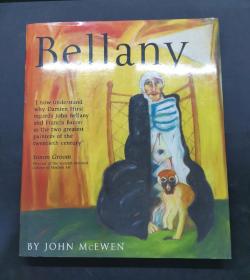
(进口英文原版)Bellany
九品南昌
¥ 2190.00
-
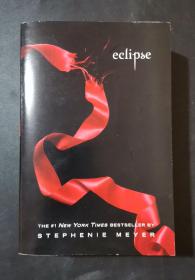
(进口英文原版)Eclipse
九五品南昌
¥ 19.00
-

(进口英文原版)Pinocchio
九五品南昌
¥ 18.00
-
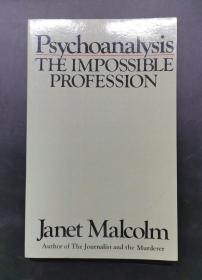
(进口英文原版)Psychoanalysis
九品南昌
¥ 89.00
-
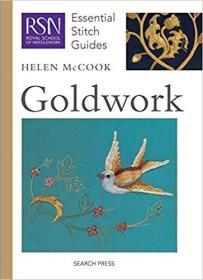
(进口英文原版)Goldwork
九五品南昌
¥ 149.00
-
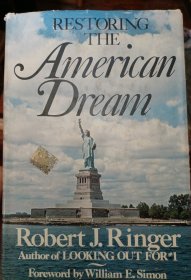
英文原版(美国梦)
九五品廊坊
¥ 100.00
-

【英文原版】美国911
八五品临沂
¥ 30.00
-

英文原版 废土:美国 Abandoned America 进口摄影集
九五品北京
¥ 240.00
-

(进口英文原版)Handmade Interiors
九品北京
¥ 268.00
— 没有更多了 —




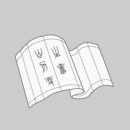

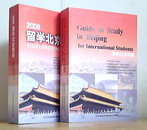


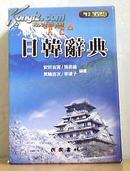




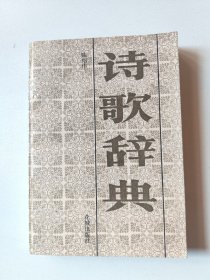




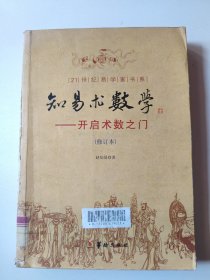





以下为对购买帮助不大的评价